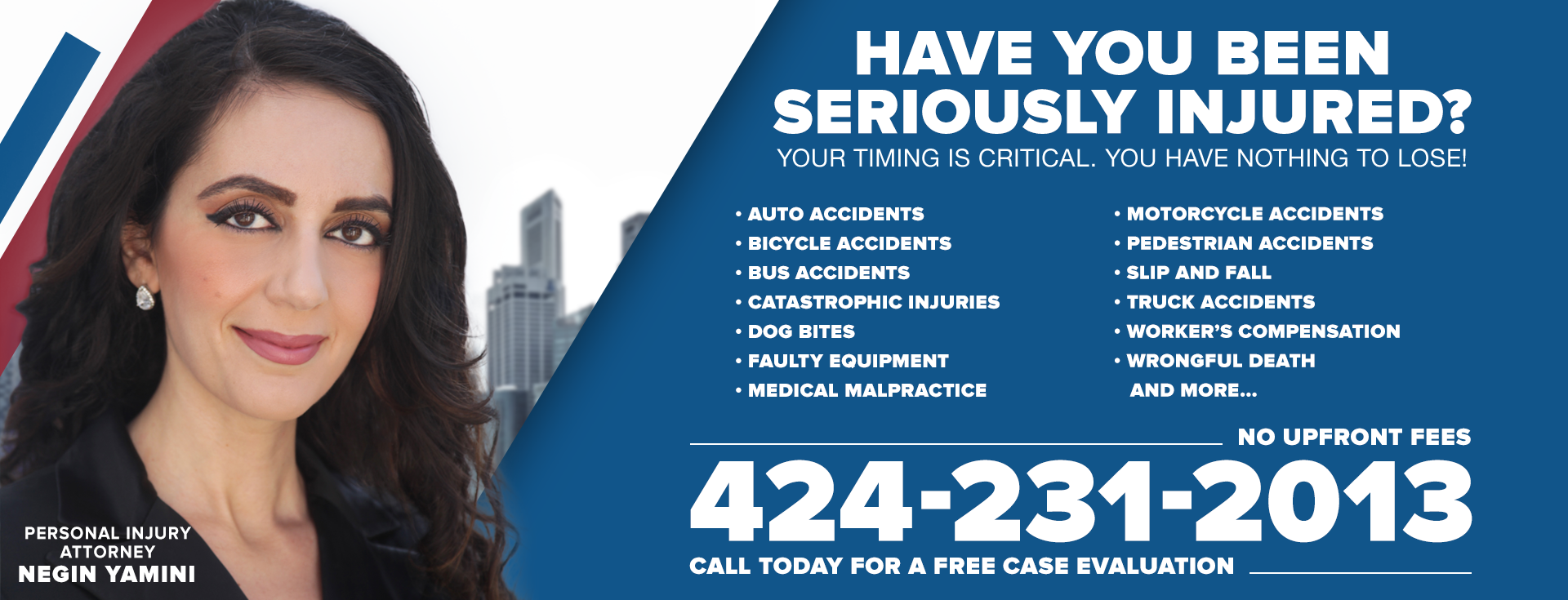Losing a loved one due to someone else’s carelessness is an unbearable experience. Although no amount of money can ever be adequate compensation for this loss, California law offers a way of recovering justice in the form of wrongful death lawsuits. The primary purpose of these legal actions is to provide financial compensation to the surviving family members to support them after losing their loved one. When it comes to most wrongful death claims, the very foundation of the claim is negligence, which is a failure to exercise the reasonable care that a prudent person would have exercised under similar circumstances and which directly resulted in the death. It might result from many circumstances, like a careless driver causing a fatal car accident, a healthcare expert making a grave mistake, or an organization that did not provide a safe working environment.
Knowing the various damages you can recover in this case is vital when pursuing a wrongful death claim. These damages include not only the economic damages but also the non-economic damages caused by a premature loss of life. Each is addressed in detail below.
Who Can Claim Damages in a California Wrongful Death Case?
Before looking at the damages, it is best to know who has the legal right to file a wrongful death claim in California. The law defines qualified claimants precisely, and there is a clear and systematic recovery system after this catastrophic loss. The main areas covered in this framework are provided in California Code of Civil Procedure 377.60.
This law makes a hierarchy of eligible people to make a wrongful death claim. The deceased's immediate family members, the surviving spouse or registered domestic partner, and the deceased’s children come first. Given their emotional and financial dependence on the deceased, these individuals have the primary right to file the claim since they have a direct and significant emotional and financial interest in the deceased.
In the absence of a surviving spouse, a domestic partner, or children, the right to file will be available to other persons who would be entitled to the property of the deceased by intestate succession, which, in most cases, includes parents. Moreover, the law acknowledges the effect on those financially dependent on the deceased, even though they are not direct biological heirs. This includes:
- A putative spouse — One who truly believed he/she was married to the decedent in a void/voidable marriage
- Stepchildren
- Parents, when they were dependent on the decedent
- A minor who lived with the deceased for the last 180 days and relied on them for at least half of their support — The minor should have been depending on the deceased for at least half of his/her support
Siblings can sue mostly when there are no remaining spouses, children, dependent minors, or parents, or when these parties release their right of priority.
This wholesome process gives the people most affected by the loss a chance to find justice. This hierarchical system simplifies the legal procedure and avoids several, possibly contradictory lawsuits resulting from one death.
The Types of Damages You Can Pursue
As the plaintiff in the lawsuit, you can claim the following damages:
-
Loss of Future Income and Income Streams
Among the most direct and physical effects of a wrongful death is the sudden loss of the monetary support the deceased would have given to their family. This type of economic loss is meant to offset the loss of support and income in the future, which is the income and benefits a deceased person could have reasonably been expected to earn and contribute during the rest of his/her life. This is not only a weekly income but also a broad range of financial losses, directly affecting the survivors' financial stability.
These losses are calculated through a careful and sometimes complicated assessment and often need the assistance of forensic accountants and economists. These experts are very instrumental in estimating the future earning potential of the deceased, considering many factors like:
- Their age at the time of death
- Their health
- Their past earning capacity
- The educational level
- The expected work life expectancy
For example, a skilled worker of 40 years old with a stable employment record and a clear career path would be projected by an economist on what his/her income growth, promotions, and retirement plan savings would be over the next few decades if he/she had kept working.
In addition to direct wages, damages in this category also contain the value of lost employment benefits. These losses can significantly impact the financial stability of surviving family members. The contributions of the deceased to retirement accounts, the 401(k) accounts, or pensions are examples that would be lost after the victim’s death. Furthermore, the surviving family members could lose health coverage, life insurance, and other employer-provided benefits to which the deceased was or would have been entitled. The aim is to give a complete financial scenario of what the deceased would have provided to their family's economic well-being, so that the survivors are not left financially stranded due to the carelessness of another. The amount is an estimate of decades of lost revenues and other benefits, discounted to its present value, to reflect the time value of money.
-
Household Services Loss
In addition to direct monetary contributions, the person will also contribute indirectly to the household in terms of a wide variety of services, which, although they do not have an apparent dollar value, have significant economic value. The loss of these household services is another important category of economic damages in a wrongful death claim. This category is separate from the loss of income or future earnings. This type of damage is critical in cases involving a stay-at-home parent or a spouse who was primarily responsible for managing household tasks, since although not reflected in a paycheck, they are vital to the operation of the household.
The extent of these lost services is large and involves a myriad of everyday activities and chores that now have to be done by the surviving family or have to be outsourced at a high cost. Childcare is one example that may vary from day-to-day care to educational assistance, transportation, and activities. The deceased might have been in charge of everything in the house, including cleaning, laundry, gardening, and repairs. Things like vehicle maintenance, cooking, grocery shopping, family finance and budget management, and even giving a ride to other family members are all valuable contributions that end with the individual's death.
The computable value of these lost household services is how much it would cost to employ professionals or third parties to carry out the same services. It typically entails professionals evaluating the number of hours the decedent would have worked on each of these kinds of services and then applying the market rate of the services in the given geographical location. For example, the cost of a professional nanny to take care of the child, a cleaning service to take care of household chores, a gardener to take care of landscaping, or a mechanic to take care of the car would all be included in this calculation. The intention is to measure the economic load on the remaining relatives who have to either do all this work themselves, usually with grief, or hire others to do it. Thus, it acknowledges the actual and real, measurable financial cost of these lost but priceless contributions to the household.
-
Loss of Love, Companionship, and Guidance
Where economic damages seek to measure the financial loss created by the wrongful death, there is another type of equally devastating, but not so easy to quantify, form of compensation that focuses on the substantial emotional and relationship loss that the survivors endure. This is the main kind of non-economic damage in a wrongful death claim: the loss of love, companionship, comfort, affection, and guidance.
This is not compensation for the suffering of the deceased, but it is compensation to the family itself because of the deep grief and loss, which is intangible. It accepts that life is not an earning capacity alone. Life is a source of invaluable emotional support and connection.
These non-economic losses depend on the relationship between the deceased and the plaintiff and are defined accordingly. To a surviving spouse or a registered domestic partner, this type of damages would include the invaluable loss of:
- Love
- The companionship that was part of their daily lives
- The comfort of being together
- Affection
- Society and the moral support that was a foundation of their relationship
These are deeply personal aspects of a relationship that no money can replace.
When a child loses a parent, they suffer the loss of:
- Parental love
- Irreplaceable guidance
- Moral training
- Nurturing
- The training by example and precept
- The nurturing that is vital to growth
Likewise, parents who lose a child lose:
- The love, comfort, and society of their child
- The guidance and support they could have expected in later life
The loss is intensely personal, as the special relationship within a family is irreplaceable.
Further, the non-economic losses are left to the judgment of the jury. Your attorney will present evidence as to the quality and closeness of the family relationship. The jury knows these losses cannot be accurately quantified in monetary terms. However, the jury will rely on the law since the law attempts to give some recognition and compensation to the profound human loss experienced.
-
Restitution of Case-Related and Pre-Death Costs
The last type of damages in a California wrongful death suit is the actual financial expenditures incurred due to the death, both before and after the passing.
These costs are often recouped in a parallel legal action called a "survival action" or a "survival claim," which is not the same as the wrongful death action but is often also brought simultaneously. This claim enables the recovery of some of the damages that are part of the deceased's estate, as opposed to damages claimed on behalf of the surviving heirs on their own account.
The initial part of these damages is the cost of the funeral and burial. These are the practical costs involved in burying the deceased. The costs include:
- The funeral service cost
- Embalming
- Cremation
- Burial plot
- Casket or urn
- Any other related final arrangements
When a sudden and tragic loss occurs, families suddenly and oftentimes find themselves incurring unexpected and significant expenses to cover these final expenses. A survival action will help recover most of these costs, reducing much of this stress. This action lets families concentrate on grieving and healing instead of struggling with unexpected bills. These financial losses directly result from the wrongful act. Thus, the deceased's estate can recover these costs.
Furthermore, the claim could incorporate medical bills that the deceased had to pay from the time of the injury or illness that eventually caused their death until the time of death. This is a broad spectrum of costs, including:
- Ambulance services
- Emergency ward treatment
- Long-term hospitalization
- Surgical costs
- Physician bills
- Special medications
- All other medical procedures are required to treat the deceased person's condition before their death.
These medical costs can be astronomical, especially in cases where the victim has suffered long-term or where the victim has been in intensive care, and this places a substantial financial burden on the estate or surviving relatives of the deceased. These costs are a direct economic loss to the estate of the deceased, which would not have been incurred were it not for the negligent act that caused the injury and the consequent death.
More importantly, and a significant and recent development in California law, is the recovery of damages due to the deceased themselves, in terms of pain and suffering that occurred before their death. As a historical matter, these types of pre-death pain and suffering damages were not recoverable in California wrongful death or survival actions. This meant that even where a victim endured excruciating pain over days, weeks, or even months before succumbing to his/her injuries, their estate was not allowed to claim compensation for that particular pain. This could be quite unfair because the law did not address the worst cases of misery.
Yet, the law was changed with the introduction of California Senate Bill 447 (SB 447), which became effective on January 1, 2022, and made these damages recoverable. This groundbreaking law recognizes that the victims who undergo gruesome injuries before their death undergo tremendous physical and mental suffering, and their estates ought to be compensated for the suffering. This means that if a victim was alive at the time of the negligence and felt pain, fear, anxiety, disfigurement, or other types of suffering after the negligent act until his/her death, the value of the suffering can now be considered in the survival claim. This provision provides a more complete sense of justice for the deceased and offers their family closure and financial relief due to the full understanding of the tragedy.
Punitive Damages in Wrongful Death Lawsuits
Along with the compensatory damages mentioned above, which are meant to restore the family to wholeness due to their losses, the law allows another form of award, which is referred to as punitive damages.
These damages are different in intent. They do not aim to compensate the family for its suffering or financial damages, but to punish the defendant for its most heinous behavior and discourage similar behavior by the defendant and others in the future. Punitive damages are a strong message against misconduct, which is deemed more than just negligence.
Punitive damages are not a typical part of all wrongful death cases. They are to be applied in extreme situations when the culpability of the defendant is shown to be high. These damages are generally limited to survival actions and must be proven by "clear and convincing evidence" that the defendant acted with:
- Malice — Usually denotes abhorrent actions performed with an intentional contempt of the rights or security of others.
- Oppression — This is despicable behavior that exposes an individual to inhumane and unfair suffering in deliberate ignorance of their rights.
- Fraud — This entails a deliberate misstatement, deception, or omission of material facts to either deprive a person of his/her property or legal rights or injure him/her in another way.
For example, a person could claim punitive damages when a company produces and sells a fatally flawed product and then deliberately hides the fact that it is hazardous to the customer to maximize profit at the expense of safety. This gross negligence of human life would fit the strict criterion of malice, and the award of punitive damages would be a fitting punishment for the company and a warning to the industry.
Find a Wrongful Death Attorney Near Me
The loss of a loved one because of the negligence of another party is devastating. Though there is no way to replace that loss, wrongful death suits aim to help provide some kind of justice and financial stability. It is best to understand the types of damages to navigate this complicated process. Furthermore, you should pursue your claim within the statute of limitations’ two-year deadline after the death of your loved one. However, there are some exceptions. Do not allow the time to expire your right to compensation.
If you believe your family has a valid wrongful death claim, talk to the experienced personal injury attorneys from Los Angeles Personal Injury Attorney as soon as possible. Contact us at 424-231-2013 to enforce your rights and investigate your legal avenues.
























